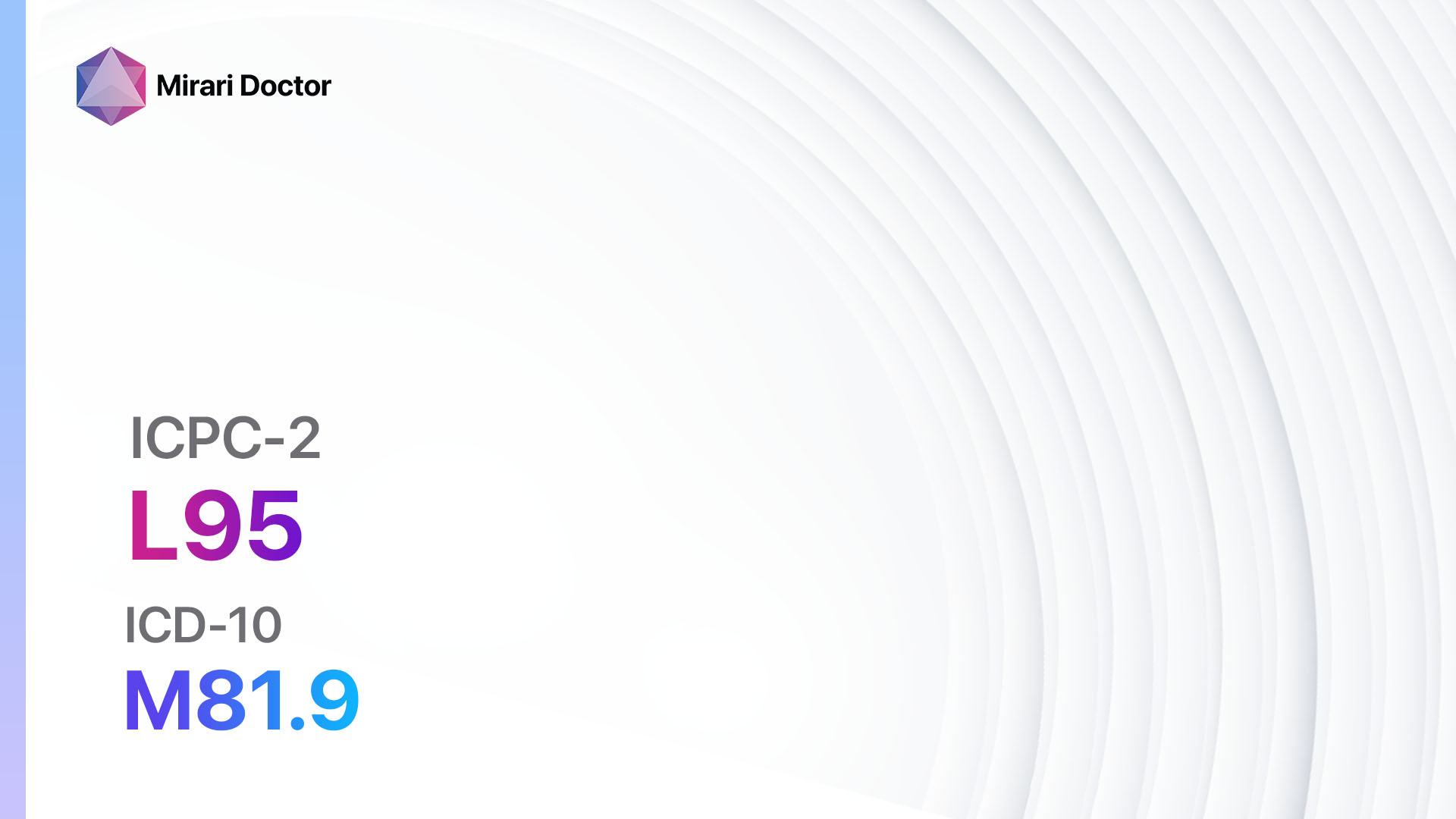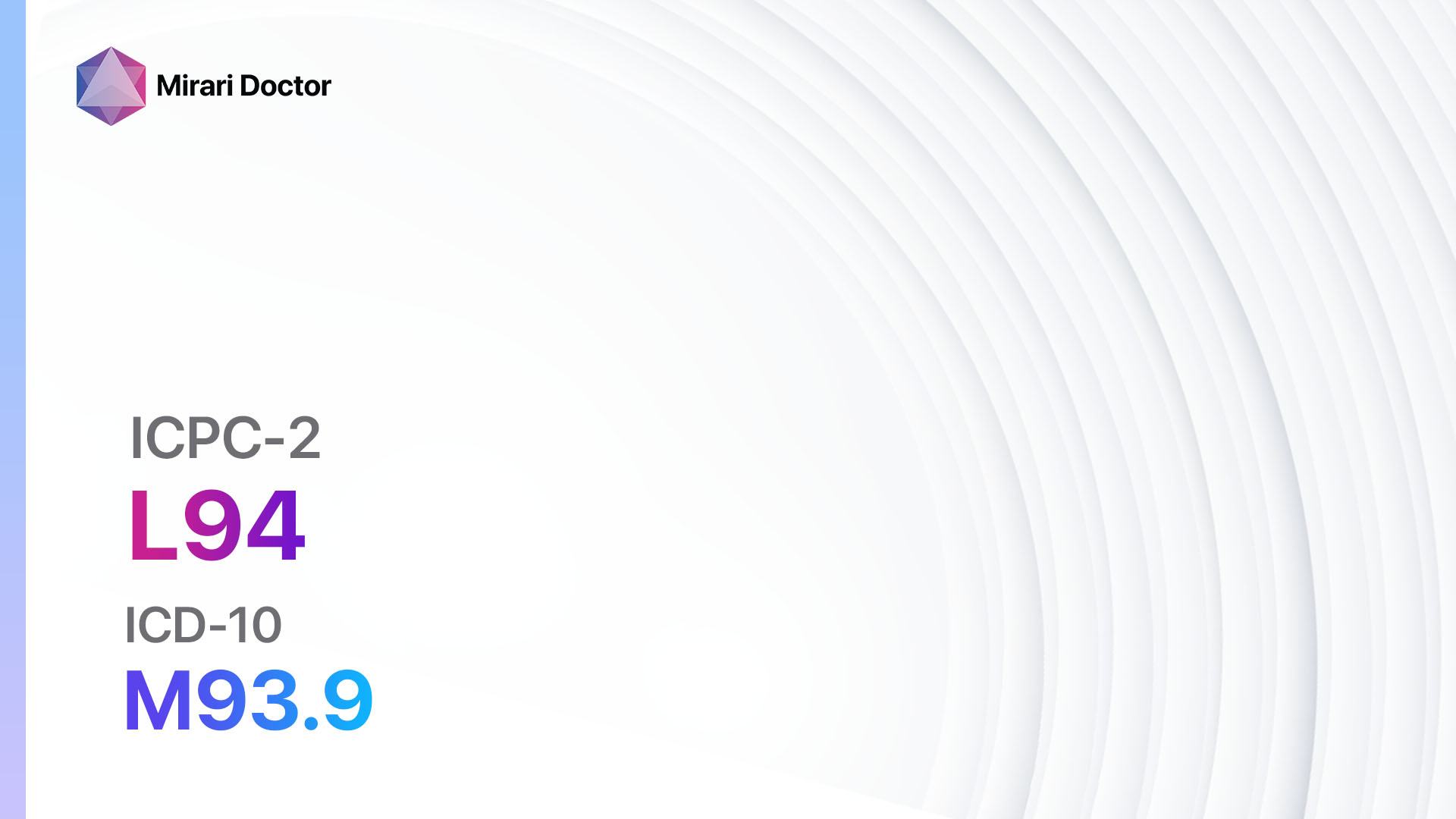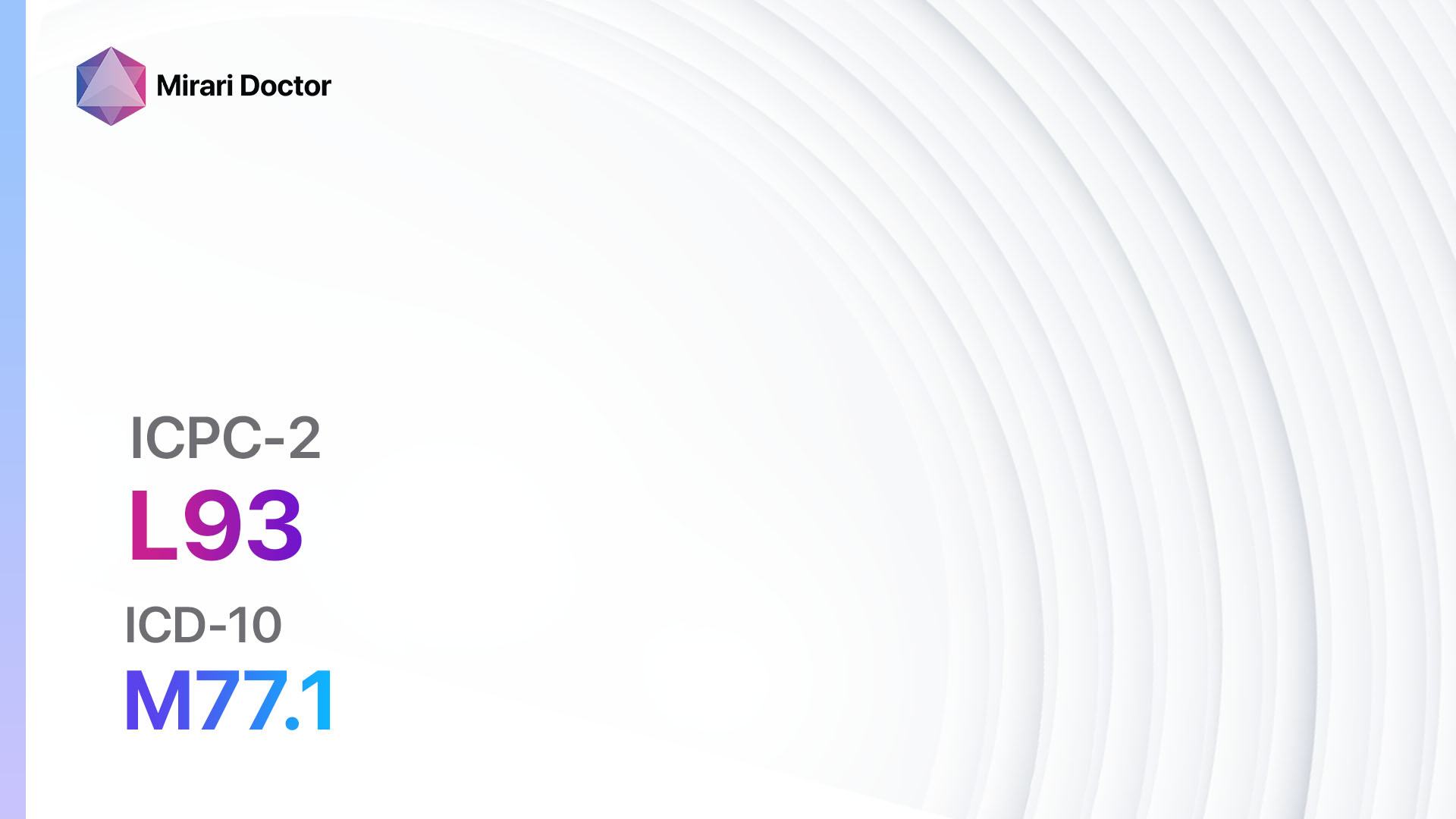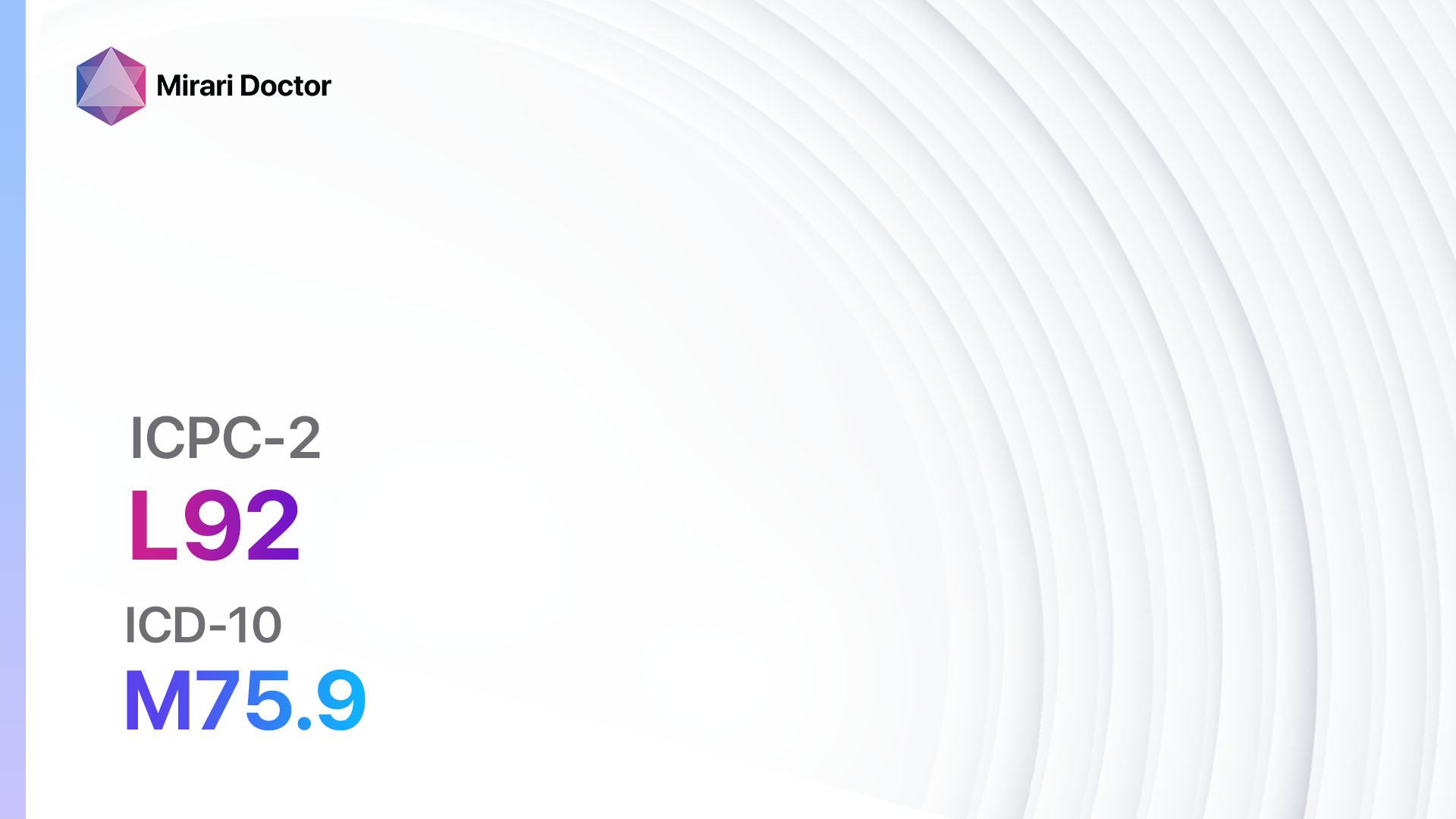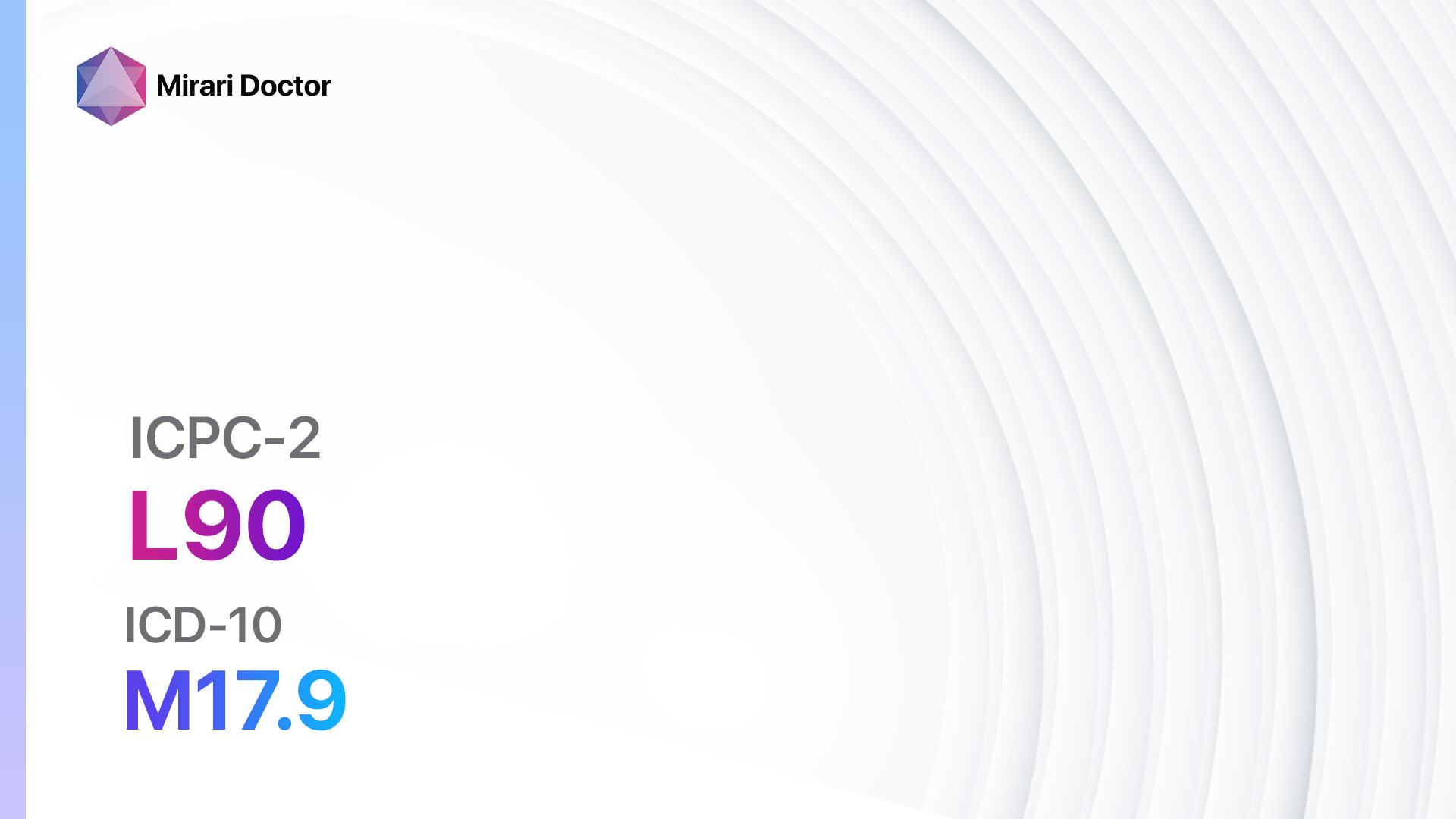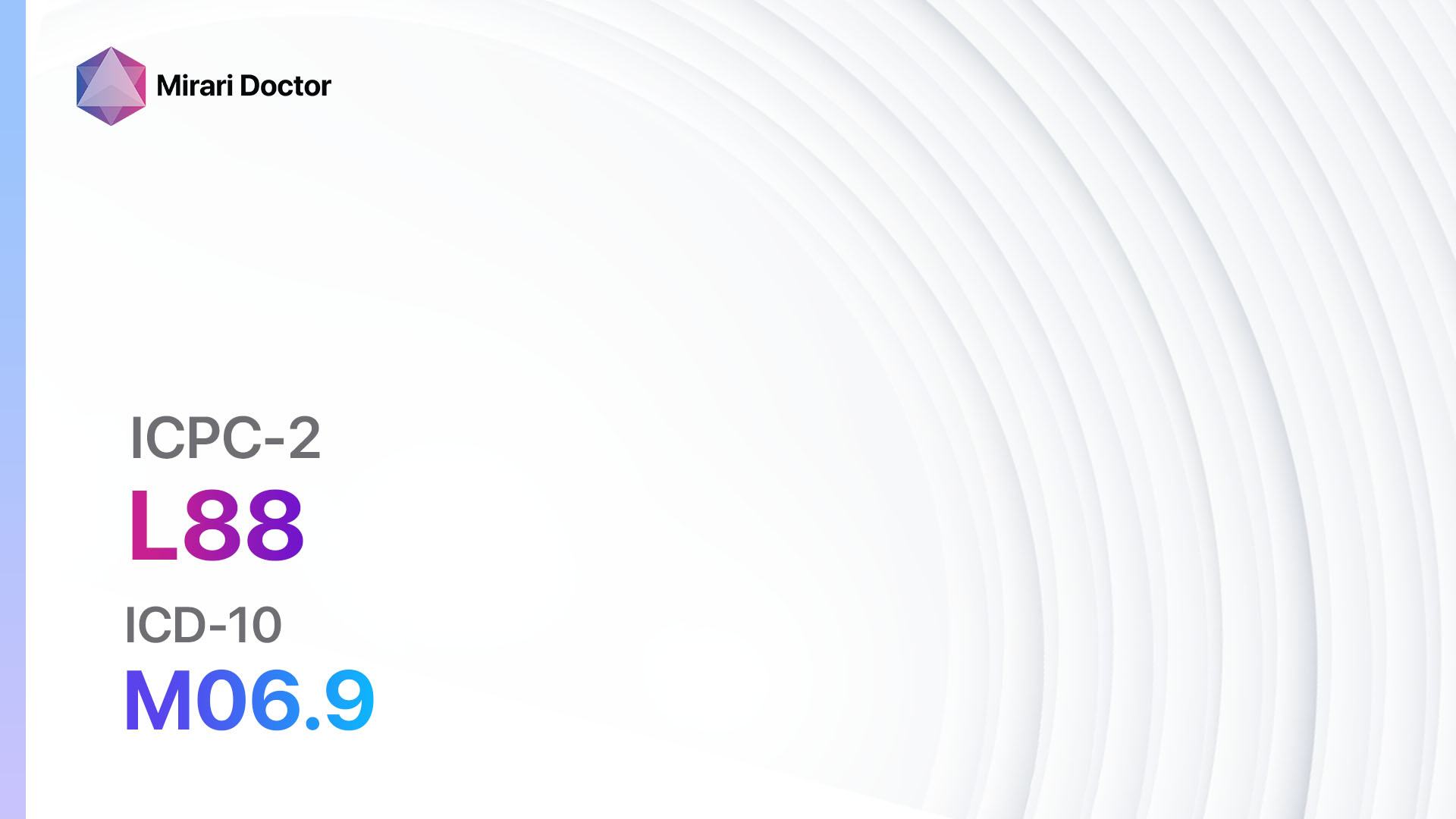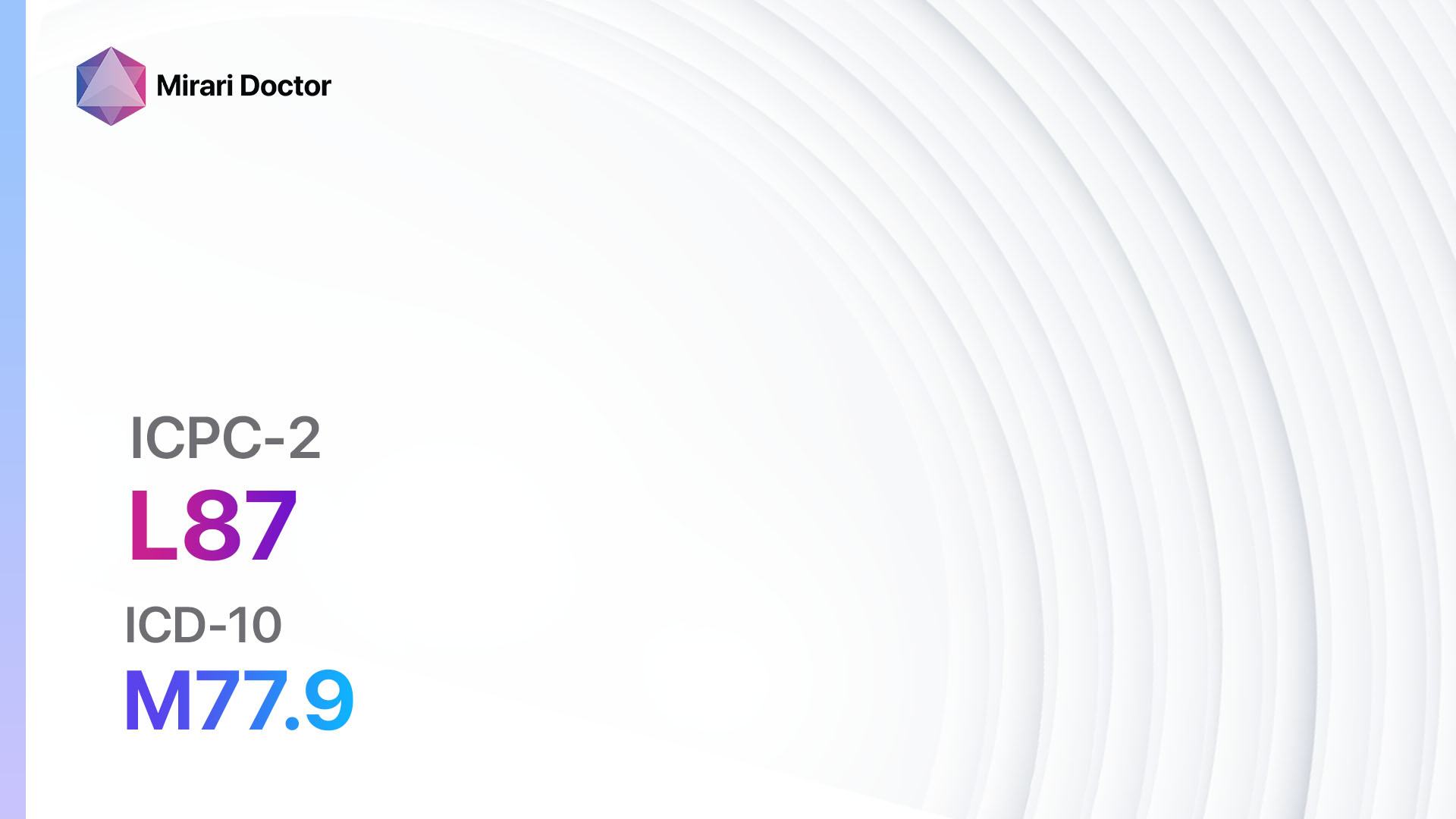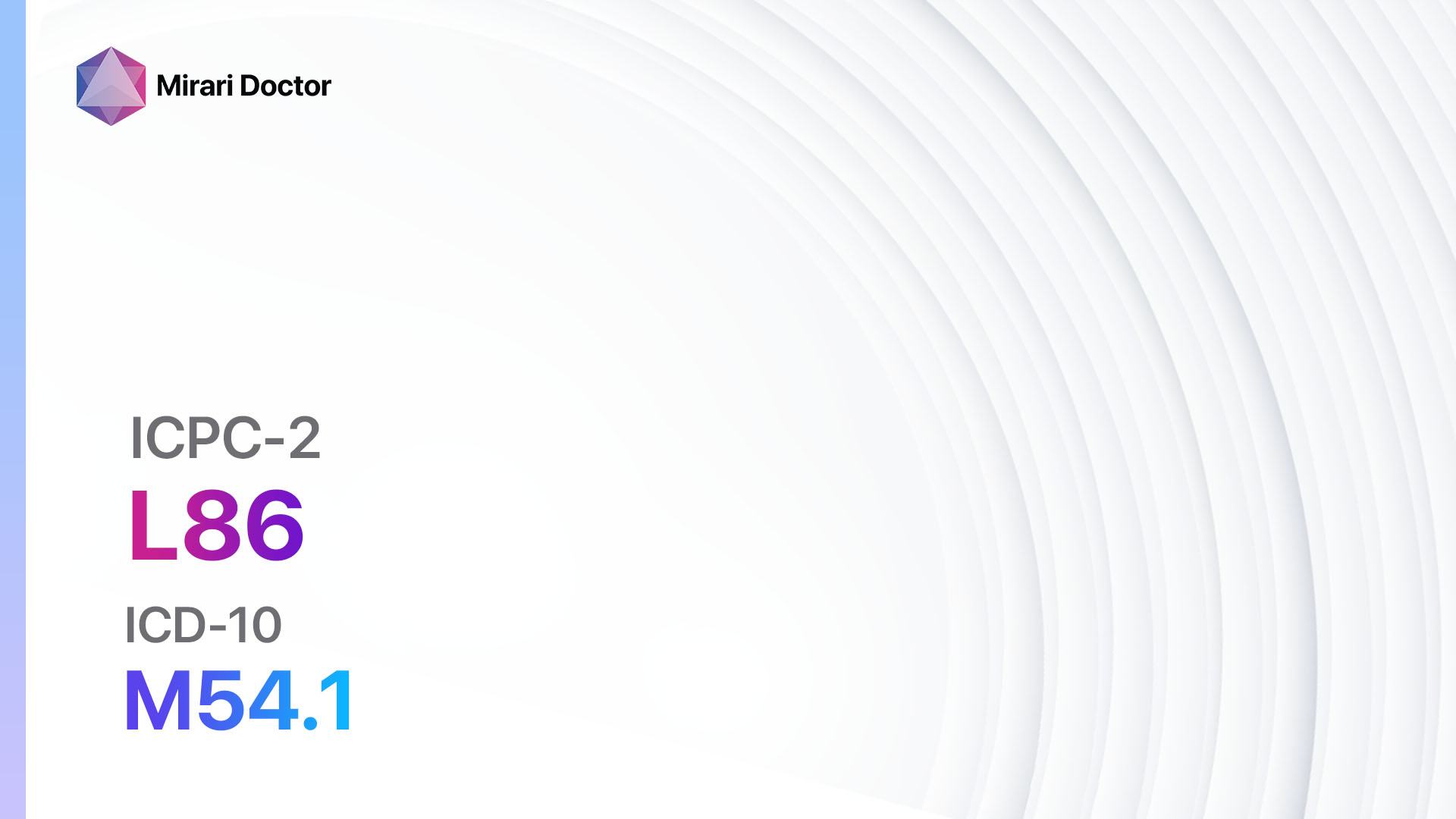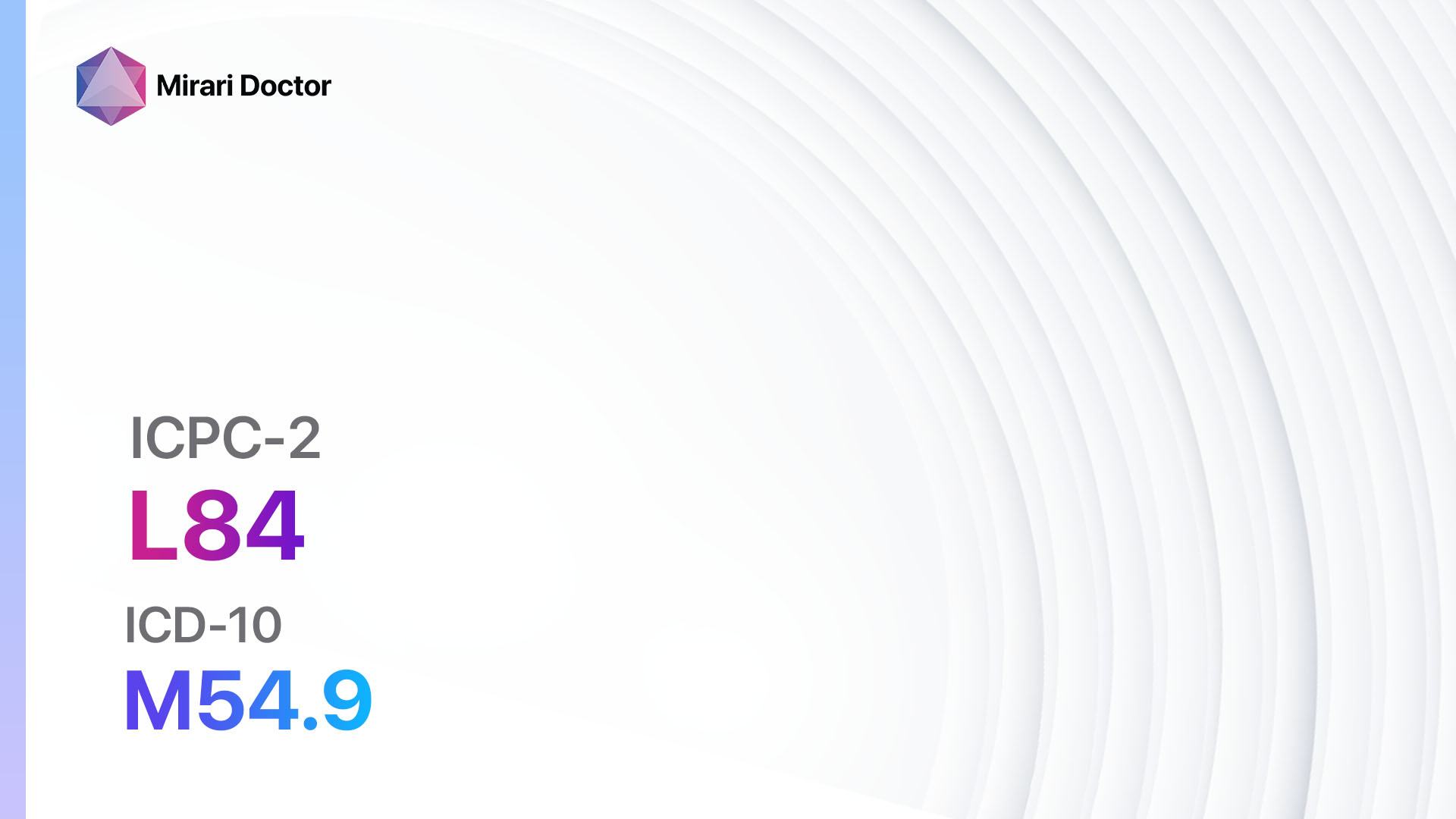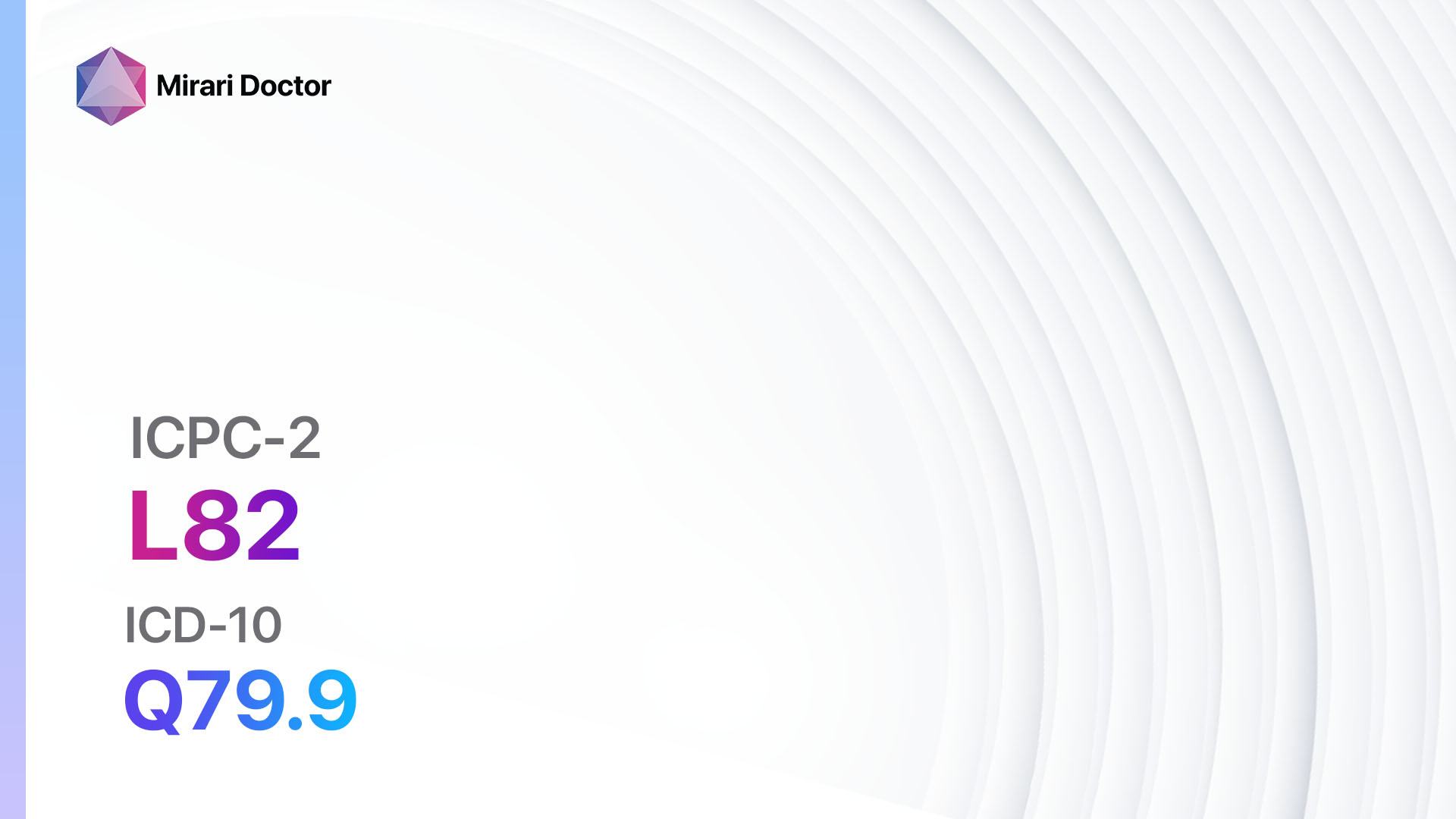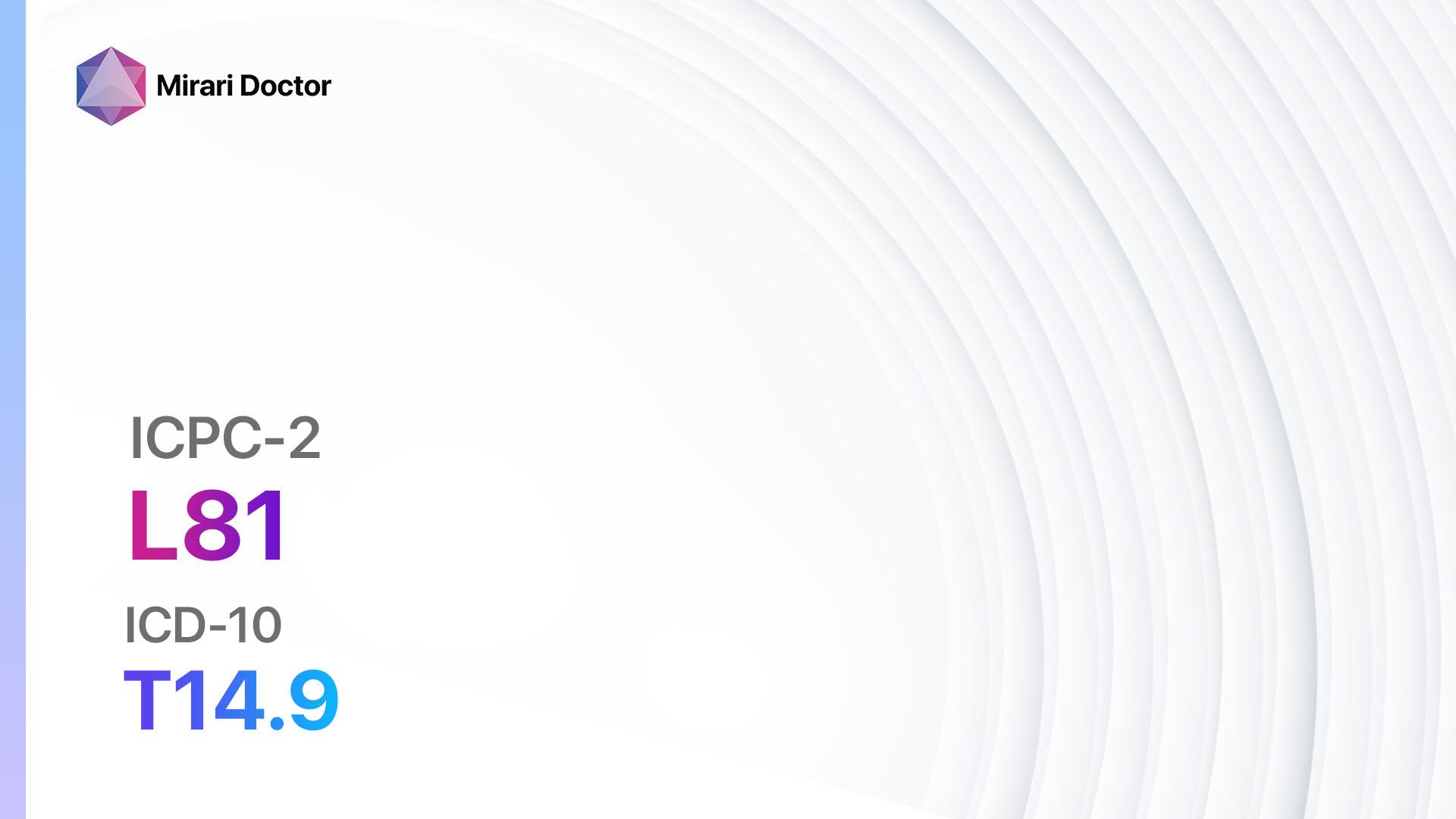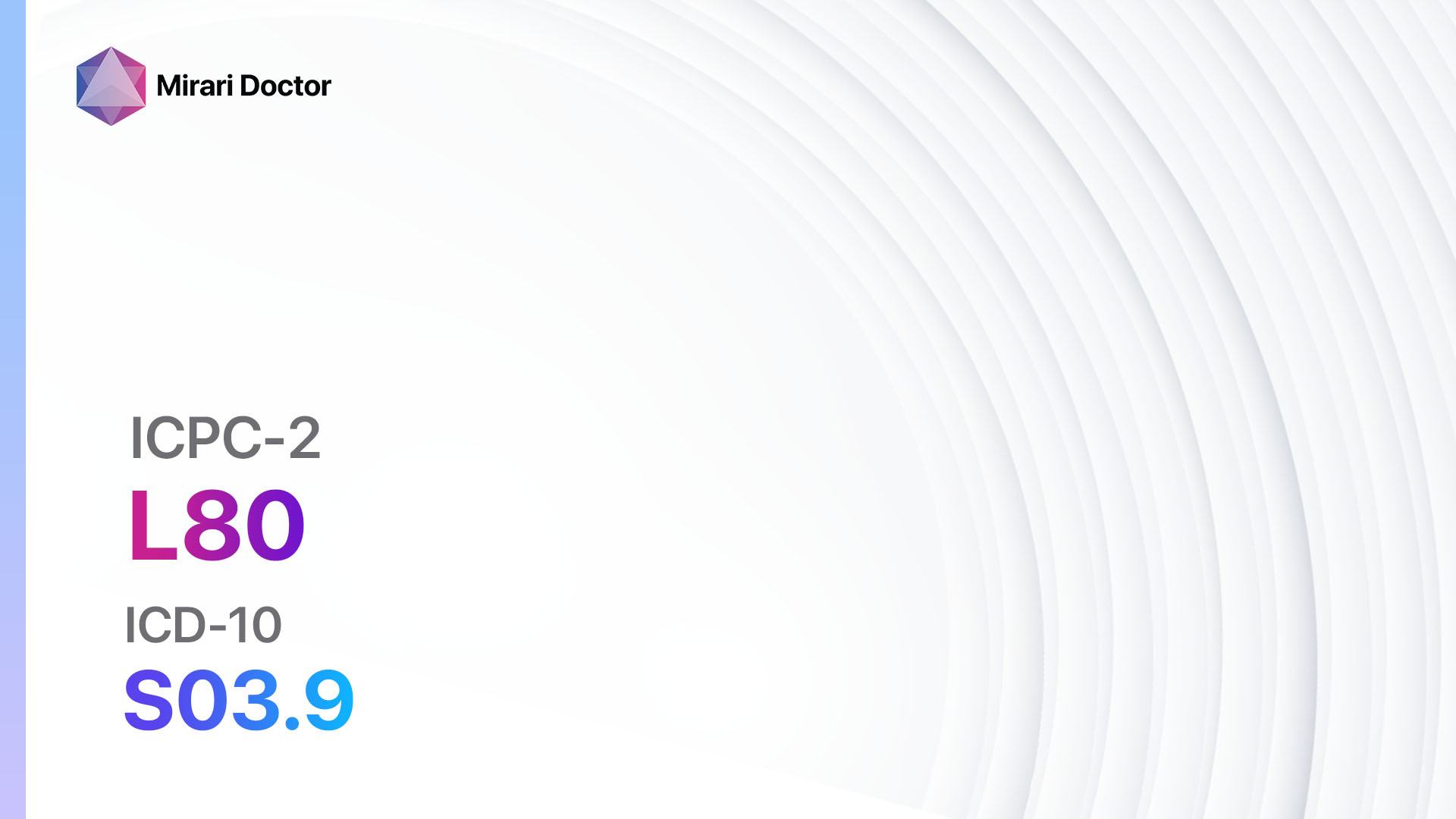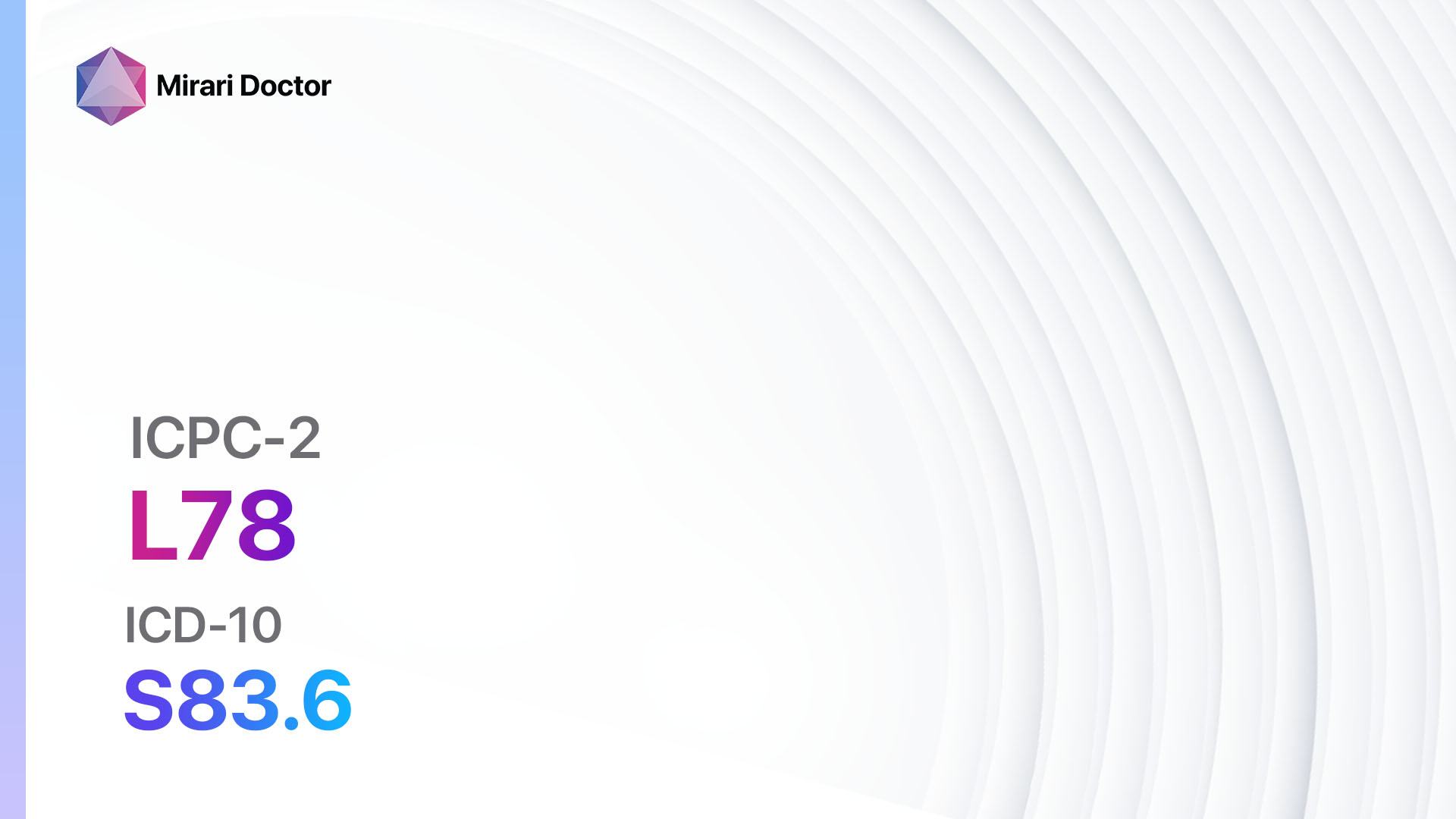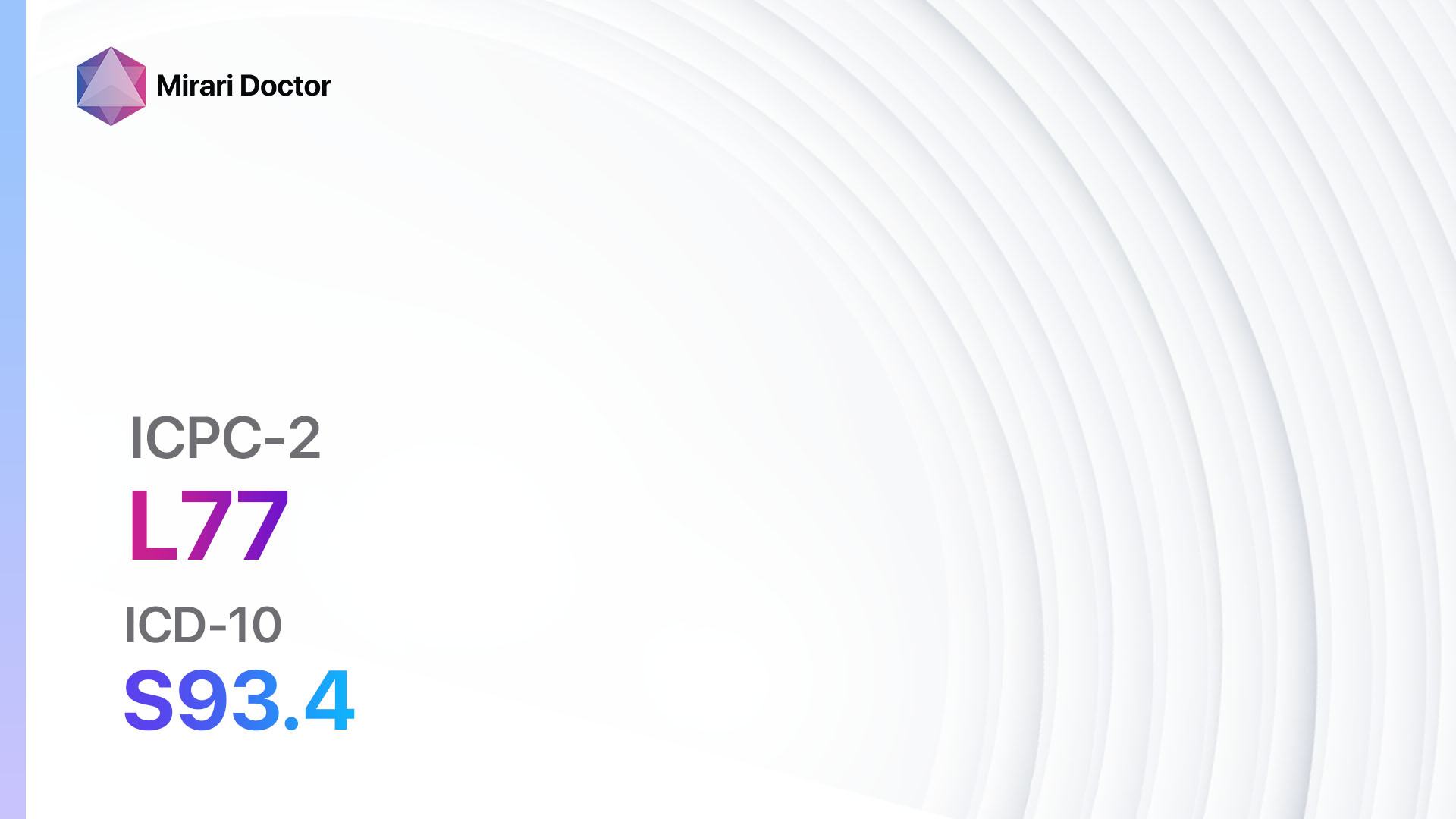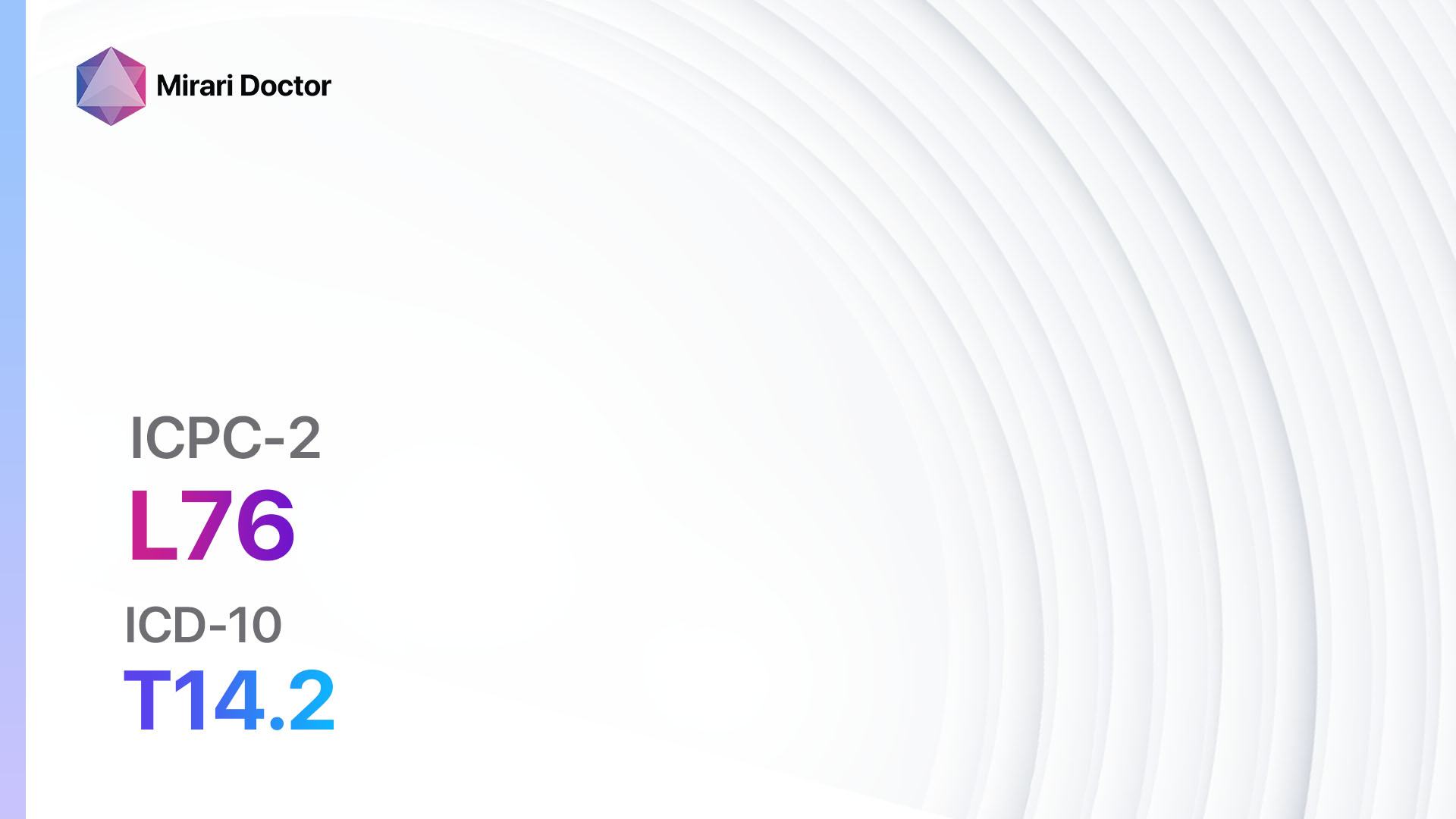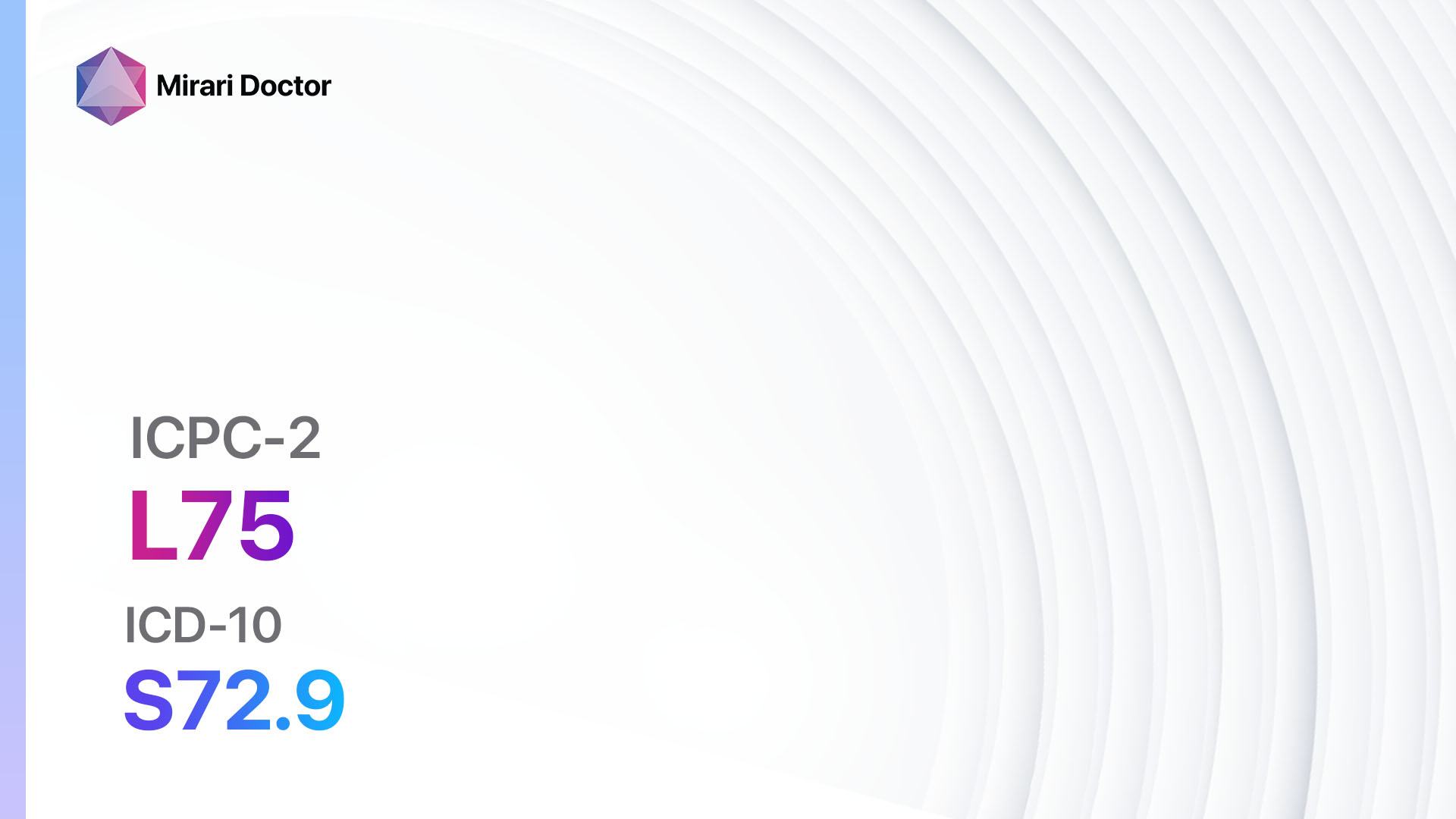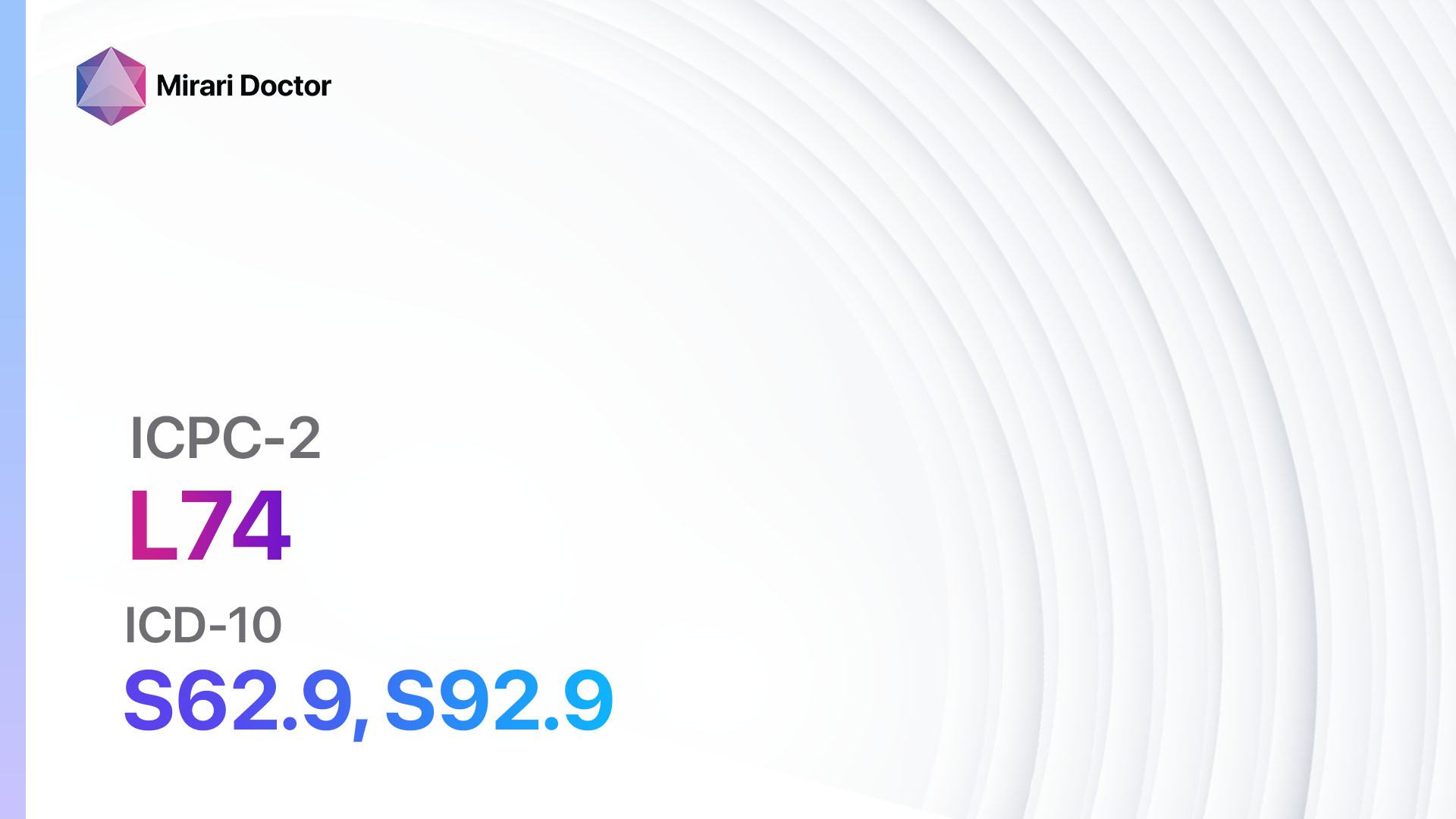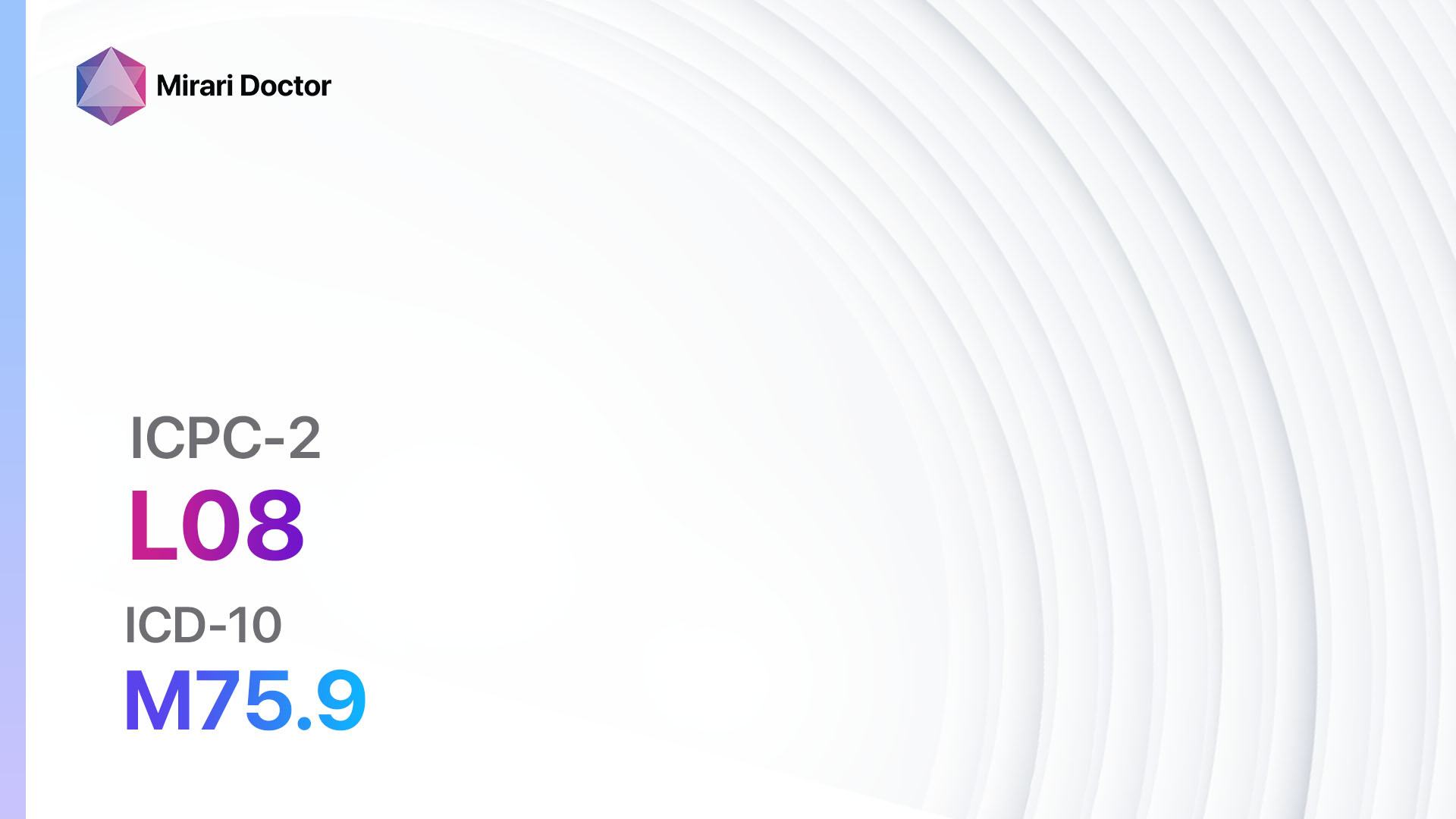
Introduction
Shoulder symptoms or complaints refer to any pain, discomfort, or abnormal sensations experienced in the shoulder region. These symptoms can be caused by various underlying conditions, including injuries, inflammation, degenerative changes, or systemic diseases[1]. The aim of this guide is to provide a comprehensive overview of the diagnostic steps, possible interventions, and lifestyle modifications that can help manage shoulder symptoms effectively.
Codes
Symptoms
- Pain: Dull, aching, or sharp pain in the shoulder region[4].
- Stiffness: Difficulty in moving the shoulder joint[4].
- Weakness: Reduced strength or inability to perform certain movements[4].
- Swelling: Visible or palpable swelling in the shoulder area[4].
- Instability: Feeling of the shoulder joint being loose or dislocating[4].
- Clicking or popping sounds: Audible sounds during shoulder movement[4].
- Numbness or tingling: Sensations of numbness or tingling in the shoulder, arm, or hand[4].
Causes
- Rotator cuff injury: Tears or strains in the muscles and tendons that stabilize the shoulder joint[5].
- Frozen shoulder: Inflammation and thickening of the shoulder capsule, leading to stiffness and limited range of motion[5].
- Shoulder impingement: Compression of the rotator cuff tendons and bursa between the bones of the shoulder[5].
- Osteoarthritis: Degenerative changes in the shoulder joint, leading to pain and stiffness[5].
- Bursitis: Inflammation of the bursa, small fluid-filled sacs that cushion the shoulder joint[5].
- Tendinitis: Inflammation of the tendons in the shoulder[5].
- Shoulder instability: Dislocation or subluxation of the shoulder joint[5].
- Fractures: Broken bones in the shoulder region[5].
- Rheumatoid arthritis: Autoimmune disease causing inflammation and damage to the joints, including the shoulder[5].
- Referred pain: Pain originating from other areas, such as the neck or upper back, radiating to the shoulder[5].
Diagnostic Steps
Medical History
- Gather information about the onset, duration, and characteristics of the shoulder symptoms[6].
- Inquire about any previous shoulder injuries or surgeries[6].
- Assess for any underlying medical conditions, such as arthritis or diabetes[6].
- Identify any activities or movements that worsen or alleviate the symptoms[6].
- Determine if there are any specific triggers or events that preceded the onset of symptoms[6].
Physical Examination
- Inspect the shoulder for any visible deformities, swelling, or asymmetry[6].
- Palpate the shoulder joint, muscles, and tendons for tenderness, warmth, or swelling[6].
- Assess the range of motion of the shoulder joint, including flexion, extension, abduction, adduction, internal rotation, and external rotation[6].
- Perform specific tests, such as the Neer test, Hawkins-Kennedy test, or empty can test, to evaluate for impingement or rotator cuff pathology[6].
- Check for any signs of instability, such as apprehension or relocation tests[6].
- Evaluate the strength of the shoulder muscles through resisted movements[6].
- Assess the sensation and reflexes in the shoulder, arm, and hand to rule out nerve involvement[6].
Laboratory Tests
- Complete blood count (CBC): To assess for signs of infection or inflammation[7].
- Erythrocyte sedimentation rate (ESR) and C-reactive protein (CRP): Indicators of systemic inflammation[7].
- Rheumatoid factor (RF) and anti-cyclic citrullinated peptide (anti-CCP) antibodies: To evaluate for rheumatoid arthritis[7].
- Blood glucose levels: To screen for diabetes, which can affect shoulder health[7].
- Thyroid function tests: Thyroid disorders can contribute to musculoskeletal symptoms[7].
- Serum uric acid levels: Elevated levels may indicate gout, which can cause shoulder pain[7].
Diagnostic Imaging
- X-ray: Provides detailed images of the bones and joints, helpful in identifying fractures, arthritis, or structural abnormalities[8].
- Magnetic resonance imaging (MRI): Offers detailed images of the soft tissues, including muscles, tendons, and ligaments, aiding in the diagnosis of rotator cuff tears, labral tears, or other soft tissue injuries[8].
- Ultrasound: Useful in evaluating the integrity of the tendons, detecting inflammation, or guiding injections[8].
- Computed tomography (CT) scan: Provides detailed cross-sectional images of the shoulder, helpful in assessing complex fractures or bony abnormalities[8].
- Arthrogram: Involves injecting a contrast dye into the shoulder joint before imaging, enhancing visualization of the joint structures[8].
Other Tests
- Electromyography (EMG) and nerve conduction studies (NCS): Assess nerve function and identify any nerve compression or damage[9].
- Arthroscopy: Minimally invasive procedure using a small camera to visualize and treat shoulder joint abnormalities[9].
- Biopsy: In rare cases, a biopsy may be necessary to evaluate for malignancies or infectious causes[9].
Follow-up and Patient Education
- Schedule follow-up appointments to monitor the progress of the symptoms and response to treatment[10].
- Provide education on proper shoulder mechanics, posture, and ergonomics to prevent further injury or aggravation[10].
- Recommend exercises and physical therapy to improve shoulder strength, flexibility, and stability[10].
- Discuss the importance of rest, ice, compression, and elevation (RICE) for acute shoulder injuries[10].
- Advise on pain management strategies, including over-the-counter analgesics or prescribed medications[10].
- Emphasize the need for regular follow-up and adherence to the treatment plan[10].
Possible Interventions
Traditional Interventions
Medications:
Top 5 drugs for Shoulder symptom/complaint:
- Nonsteroidal anti-inflammatory drugs (NSAIDs) (e.g., Ibuprofen, Naproxen):
- Cost: Generic versions can be $3-$20/month.
- Contraindications: Active peptic ulcer disease, history of gastrointestinal bleeding, severe renal impairment.
- Side effects: Upset stomach, heartburn, increased risk of bleeding.
- Severe side effects: Gastrointestinal bleeding, kidney damage, cardiovascular events.
- Drug interactions: Anticoagulants, corticosteroids, selective serotonin reuptake inhibitors (SSRIs).
- Warning: Prolonged use can lead to gastrointestinal complications.
- Acetaminophen:
- Cost: Generic versions can be $3-$10/month.
- Contraindications: Severe liver disease, alcoholism.
- Side effects: Rare at therapeutic doses, but high doses can cause liver damage.
- Severe side effects: Acute liver failure.
- Drug interactions: Alcohol, certain antibiotics.
- Warning: Avoid exceeding the recommended daily dose to prevent liver toxicity.
- Muscle relaxants (e.g., Cyclobenzaprine, Methocarbamol):
- Cost: Generic versions can be $10-$30/month.
- Contraindications: Glaucoma, urinary retention, severe liver disease.
- Side effects: Drowsiness, dizziness, dry mouth.
- Severe side effects: Allergic reactions, severe sedation.
- Drug interactions: Central nervous system depressants, monoamine oxidase inhibitors (MAOIs).
- Warning: Avoid driving or operating heavy machinery while taking muscle relaxants.
- Corticosteroids (e.g., Prednisone, Methylprednisolone):
- Cost: Generic versions can be $10-$50/month.
- Contraindications: Active infections, uncontrolled diabetes, systemic fungal infections.
- Side effects: Increased appetite, weight gain, mood changes.
- Severe side effects: Increased risk of infections, osteoporosis, adrenal suppression.
- Drug interactions: Nonsteroidal anti-inflammatory drugs (NSAIDs), anticoagulants, antidiabetic medications.
- Warning: Prolonged use can lead to adrenal insufficiency.
- Opioids (e.g., Oxycodone, Hydrocodone):
- Cost: Generic versions can be $10-$50/month.
- Contraindications: Respiratory depression, acute asthma, paralytic ileus.
- Side effects: Sedation, constipation, nausea.
- Severe side effects: Respiratory depression, addiction, overdose.
- Drug interactions: Benzodiazepines, alcohol, other central nervous system depressants.
- Warning: Opioids should be used cautiously and for short durations due to the risk of dependence and addiction.
Alternative Drugs:
- Topical analgesics (e.g., Lidocaine patches, Capsaicin cream): Provide localized pain relief without systemic side effects. Cost: $10-$30 per application.
- Antidepressants (e.g., Amitriptyline, Duloxetine): Can help manage chronic pain and improve sleep. Cost: Generic versions can be $10-$50/month.
- Anticonvulsants (e.g., Gabapentin, Pregabalin): May be effective in neuropathic pain management. Cost: Generic versions can be $10-$50/month.
- Steroid injections: Administered directly into the shoulder joint or surrounding tissues to reduce inflammation and pain. Cost: $100-$500 per injection.
- Hyaluronic acid injections: Used for osteoarthritis-related shoulder pain to provide lubrication and cushioning. Cost: $200-$1000 per injection.
Surgical Procedures:
- Arthroscopic surgery: Minimally invasive procedure to repair or remove damaged structures in the shoulder joint. Cost: $5,000-$15,000.
- Rotator cuff repair: Surgical repair of torn or damaged rotator cuff tendons. Cost: $10,000-$20,000.
- Shoulder replacement surgery: Replacement of the damaged shoulder joint with an artificial joint. Cost: $20,000-$40,000.
Alternative Interventions
- Physical therapy: Targeted exercises and manual techniques to improve shoulder strength, flexibility, and function. Cost: $50-$150 per session.
- Chiropractic care: Manual manipulation of the spine and joints to alleviate pain and improve mobility. Cost: $50-$200 per session.
- Acupuncture: Traditional Chinese medicine technique involving the insertion of thin needles at specific points to relieve pain and promote healing. Cost: $60-$120 per session.
- Massage therapy: Manipulation of soft tissues to reduce muscle tension and improve circulation. Cost: $60-$120 per session.
- Transcutaneous electrical nerve stimulation (TENS): Application of low-voltage electrical currents to the skin to relieve pain. Cost: $50-$100 for a TENS unit.
Lifestyle Interventions
- Rest and activity modification: Avoid activities that worsen the shoulder symptoms and allow sufficient rest for healing.
- Heat and cold therapy: Apply heat packs or cold compresses to the shoulder to reduce pain and inflammation.
- Posture correction: Maintain proper posture to minimize strain on the shoulder joint and muscles.
- Ergonomic adjustments: Ensure proper ergonomics at workstations and during daily activities to prevent shoulder strain.
- Weight management: Maintain a healthy weight to reduce stress on the shoulder joints.
- Regular exercise: Engage in regular low-impact exercises, such as swimming or cycling, to improve shoulder strength and flexibility.
- Strengthening exercises: Perform specific exercises targeting the shoulder muscles to improve stability and prevent further injury.
- Stretching exercises: Incorporate stretching exercises to improve shoulder flexibility and range of motion.
- Pain management techniques: Practice relaxation techniques, such as deep breathing or meditation, to manage pain and stress.
It is important to note that the cost ranges provided are approximate and may vary depending on the location and availability of the interventions.
Mirari Cold Plasma Alternative Intervention
Understanding Mirari Cold Plasma
- Safe and Non-Invasive Treatment: Mirari Cold Plasma is a safe and non-invasive treatment option for various skin conditions. It does not require incisions, minimizing the risk of scarring, bleeding, or tissue damage.
- Efficient Extraction of Foreign Bodies: Mirari Cold Plasma facilitates the removal of foreign bodies from the skin by degrading and dissociating organic matter, allowing easier access and extraction.
- Pain Reduction and Comfort: Mirari Cold Plasma has a local analgesic effect, providing pain relief during the treatment, making it more comfortable for the patient.
- Reduced Risk of Infection: Mirari Cold Plasma has antimicrobial properties, effectively killing bacteria and reducing the risk of infection.
- Accelerated Healing and Minimal Scarring: Mirari Cold Plasma stimulates wound healing and tissue regeneration, reducing healing time and minimizing the formation of scars.
Mirari Cold Plasma Prescription
Video instructions for using Mirari Cold Plasma Device – L08 Shoulder symptom/complaint (ICD-10:M75.9)
| Mild | Moderate | Severe |
| Mode setting: 2 (Wound Healing) Location: 0 (Localized) Morning: 15 minutes, Evening: 15 minutes |
Mode setting: 2 (Wound Healing) Location: 0 (Localized) Morning: 30 minutes, Lunch: 30 minutes, Evening: 30 minutes |
Mode setting: 2 (Wound Healing) Location: 0 (Localized) Morning: 30 minutes, Lunch: 30 minutes, Evening: 30 minutes |
| Mode setting: 9 (Arthritis) Location: 0 (Localized) Morning: 15 minutes, Evening: 15 minutes |
Mode setting: 9 (Arthritis) Location: 0 (Localized) Morning: 30 minutes, Lunch: 30 minutes, Evening: 30 minutes |
Mode setting: 9 (Arthritis) Location: 0 (Localized) Morning: 30 minutes, Lunch: 30 minutes, Evening: 30 minutes |
| Mode setting: 7 (Immunotherapy) Location: 1 (Sacrum) Morning: 15 minutes, Evening: 15 minutes |
Mode setting: 7 (Immunotherapy) Location: 1 (Sacrum) Morning: 30 minutes, Lunch: 30 minutes, Evening: 30 minutes |
Mode setting: 7 (Immunotherapy) Location: 1 (Sacrum) Morning: 30 minutes, Lunch: 30 minutes, Evening: 30 minutes |
| Total Morning: 45 minutes approx. $7.50 USD, Evening: 45 minutes approx. $7.50 USD |
Total Morning: 90 minutes approx. $15 USD, Lunch: 90 minutes approx. $15 USD, Evening: 90 minutes approx. $15 USD, |
Total Morning: 90 minutes approx. $15 USD, Lunch: 90 minutes approx. $15 USD, Evening: 90 minutes approx. $15 USD, |
| Usual treatment for 7-60 days approx. $105 USD – $900 USD | Usual treatment for 6-8 weeks approx. $1,890 USD – $2,520 USD |
Usual treatment for 3-6 months approx. $4,050 USD – $8,100 USD
|
 |
|
Use the Mirari Cold Plasma device to treat Shoulder symptom/complaint effectively.
WARNING: MIRARI COLD PLASMA IS DESIGNED FOR THE HUMAN BODY WITHOUT ANY ARTIFICIAL OR THIRD PARTY PRODUCTS. USE OF OTHER PRODUCTS IN COMBINATION WITH MIRARI COLD PLASMA MAY CAUSE UNPREDICTABLE EFFECTS, HARM OR INJURY. PLEASE CONSULT A MEDICAL PROFESSIONAL BEFORE COMBINING ANY OTHER PRODUCTS WITH USE OF MIRARI.
Step 1: Cleanse the Skin
- Start by cleaning the affected area of the skin with a gentle cleanser or mild soap and water. Gently pat the area dry with a clean towel.
Step 2: Prepare the Mirari Cold Plasma device
- Ensure that the Mirari Cold Plasma device is fully charged or has fresh batteries as per the manufacturer’s instructions. Make sure the device is clean and in good working condition.
- Switch on the Mirari device using the power button or by following the specific instructions provided with the device.
- Some Mirari devices may have adjustable settings for intensity or treatment duration. Follow the manufacturer’s instructions to select the appropriate settings based on your needs and the recommended guidelines.
Step 3: Apply the Device
- Place the Mirari device in direct contact with the affected area of the skin. Gently glide or hold the device over the skin surface, ensuring even coverage of the area experiencing.
- Slowly move the Mirari device in a circular motion or follow a specific pattern as indicated in the user manual. This helps ensure thorough treatment coverage.
Step 4: Monitor and Assess:
- Keep track of your progress and evaluate the effectiveness of the Mirari device in managing your Shoulder symptom/complaint. If you have any concerns or notice any adverse reactions, consult with your health care professional.
Note
This guide is for informational purposes only and should not replace the advice of a medical professional. Always consult with your healthcare provider or a qualified medical professional for personal advice, diagnosis, or treatment. Do not solely rely on the information presented here for decisions about your health. Use of this information is at your own risk. The authors of this guide, nor any associated entities or platforms, are not responsible for any potential adverse effects or outcomes based on the content.
Mirari Cold Plasma System Disclaimer
- Purpose: The Mirari Cold Plasma System is a Class 2 medical device designed for use by trained healthcare professionals. It is registered for use in Thailand and Vietnam. It is not intended for use outside of these locations.
- Informational Use: The content and information provided with the device are for educational and informational purposes only. They are not a substitute for professional medical advice or care.
- Variable Outcomes: While the device is approved for specific uses, individual outcomes can differ. We do not assert or guarantee specific medical outcomes.
- Consultation: Prior to utilizing the device or making decisions based on its content, it is essential to consult with a Certified Mirari Tele-Therapist and your medical healthcare provider regarding specific protocols.
- Liability: By using this device, users are acknowledging and accepting all potential risks. Neither the manufacturer nor the distributor will be held accountable for any adverse reactions, injuries, or damages stemming from its use.
- Geographical Availability: This device has received approval for designated purposes by the Thai and Vietnam FDA. As of now, outside of Thailand and Vietnam, the Mirari Cold Plasma System is not available for purchase or use.
References
- Linaker, C. H., & Walker-Bone, K. (2015). Shoulder disorders and occupation. Best Practice & Research Clinical Rheumatology, 29(3), 405-423.
- WONCA International Classification Committee. (1998). ICPC-2: International Classification of Primary Care. Oxford University Press, USA.
- World Health Organization. (2019). International statistical classification of diseases and related health problems (11th ed.).
- Greving, K., Dorrestijn, O., Winters, J. C., Groenhof, F., van der Meer, K., Stevens, M., & Diercks, R. L. (2012). Incidence, prevalence, and consultation rates of shoulder complaints in general practice. Scandinavian Journal of Rheumatology, 41(2), 150-155.
- Mitchell, C., Adebajo, A., Hay, E., & Carr, A. (2005). Shoulder pain: diagnosis and management in primary care. BMJ, 331(7525), 1124-1128.
- Hermans, J., Luime, J. J., Meuffels, D. E., Reijman, M., Simel, D. L., & Bierma-Zeinstra, S. M. (2013). Does this patient with shoulder pain have rotator cuff disease? The Rational Clinical Examination systematic review. JAMA, 310(8), 837-847.
- Cadogan, A., Laslett, M., Hing, W. A., McNair, P. J., & Coates, M. H. (2011). A prospective study of shoulder pain in primary care: prevalence of imaged pathology and response to guided diagnostic blocks. BMC Musculoskeletal Disorders, 12(1), 119.
- Lenza, M., Buchbinder, R., Takwoingi, Y., Johnston, R. V., Hanchard, N. C., & Faloppa, F. (2013). Magnetic resonance imaging, magnetic resonance arthrography and ultrasonography for assessing rotator cuff tears in people with shoulder pain for whom surgery is being considered. Cochrane Database of Systematic Reviews, (9).
- Jain, N. B., Wilcox III, R. B., Katz, J. N., & Higgins, L. D. (2013). Clinical examination of the rotator cuff. PM&R, 5(1), 45-56.
- Kuhn, J. E. (2009). Exercise in the treatment of rotator cuff impingement: a systematic review and a synthesized evidence-based rehabilitation protocol. Journal of Shoulder and Elbow Surgery, 18(1), 138-160.
Related articles
Made in USA



